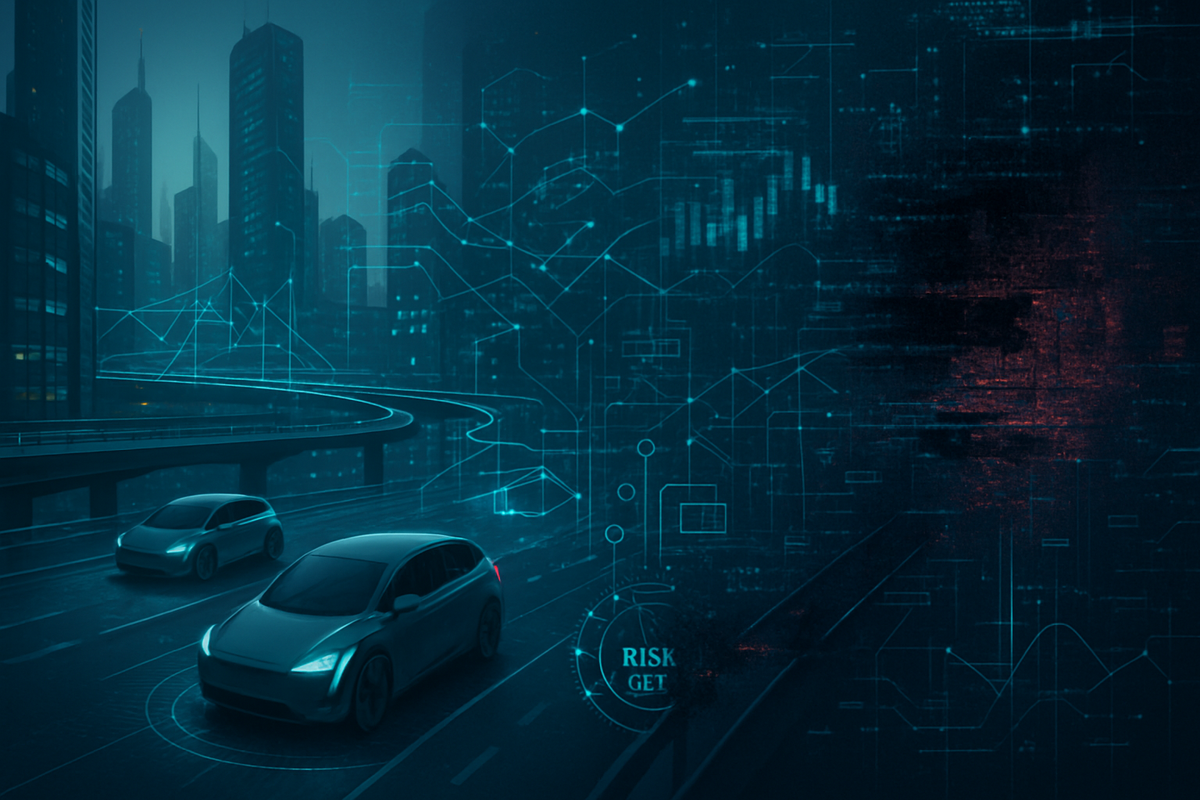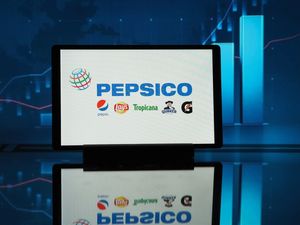
Best's Review's October issue has landed, delivering a comprehensive analysis of the technological forces reshaping the insurance landscape. The report, a critical read for industry stakeholders, delves into three pivotal areas: the transformative potential of autonomous vehicles, the burgeoning influence of insurtech companies, and the insidious new threat of "data poisoning" to AI models. This timely examination underscores a critical juncture for the insurance sector, where innovation is not merely an advantage but a prerequisite for survival and growth.
The immediate implications are profound, signaling an era of rapid adaptation for insurers. The traditional models of risk assessment, underwriting, and claims management are under immense pressure to evolve, driven by advancements in automotive technology, the agile disruption brought by insurtechs, and the ever-present need for robust cybersecurity. As the industry grapples with these converging trends, Best's Review serves as a crucial compass, guiding attention toward the challenges and opportunities that will define the market in the coming years.
Navigating the Currents of Change: A Deep Dive into Insurance Technology
Best's Review's October issue, released amidst a rapidly accelerating digital transformation, meticulously details the seismic shifts occurring within insurance technology. The report highlights that the full impact of autonomous vehicles (AVs) on the insurance industry, while still unfolding, is anticipated to be monumental. Articles within the issue, such as "Self-Driving Shift Comes With Early Costs, Changing Landscape for Insurers," explore the projected transition of liability from human drivers to vehicle manufacturers, fundamentally altering traditional auto liability policies and risk assessment frameworks. This means insurers must prepare for a future where product liability takes center stage, requiring new partnerships with automotive giants and innovative policy structures.
The growing role of insurtechs is another central theme, with the report emphasizing that fostering an innovation culture is paramount for established insurers. The article "It's Not Just AI: Tech Advancements Are Boosting Insurance Industry's Future" underscores that beyond artificial intelligence, a spectrum of digital solutions is streamlining processes, enhancing customer experience, and driving new product development. Innovation hubs, often backed by traditional insurers, are gaining traction, serving as incubators for startups and accelerators for new technological capabilities. This collaborative ecosystem is reshaping how insurance products are conceived, delivered, and managed.
Crucially, the report also casts a stark light on a novel and significant cybersecurity threat: data poisoning. In "AM Best: AI Model Poisoning Emerges as New Threat to Insurance Data Integrity," Best's Review defines this as the malicious manipulation of training data for machine learning models, leading to inaccurate predictions and compromised system integrity. This threat, often hidden, directly imperils core insurance operations, from precise underwriting to effective fraud detection. The consequences can range from incorrect risk assessments and fraudulent payouts to severe breaches of customer data, demanding immediate and robust preventative measures from the industry. Given the current date of 10/10/2025, this October issue report is highly current, offering a timely assessment of ongoing and emerging trends that are already influencing strategic decisions across the sector.
The Shifting Tides: Who Wins and Who Loses in the Tech Revolution
The technological shifts highlighted by Best's Review will inevitably create clear winners and losers within the financial markets, particularly in the insurance and automotive sectors. Insurtechs are poised to be significant beneficiaries. Companies like Lemonade (NYSE: LMND), with their AI-driven platforms and agile operating models, are perfectly positioned to capitalize on the demand for digital-first insurance solutions and personalized offerings. Their ability to rapidly integrate new technologies and adapt to changing risk profiles, especially those introduced by autonomous vehicles, gives them a distinct advantage. Traditional insurers that have proactively invested in their digital transformation and formed strategic partnerships with insurtechs, such as Travelers Companies (NYSE: TRV) or Chubb Limited (NYSE: CB), will also emerge stronger. These companies are leveraging technology to enhance efficiency, improve customer engagement, and develop new, data-driven products tailored to emerging risks.
On the other hand, traditional insurers slow to embrace technological change risk being left behind. Companies heavily reliant on outdated legacy systems and manual processes will struggle to compete with the agility and cost-effectiveness of their tech-forward counterparts. Their inability to process vast amounts of new data, adapt to the nuances of autonomous vehicle liability, or fend off sophisticated cyber threats like data poisoning could lead to market share erosion and reduced profitability. Furthermore, companies that fail to adequately address the threat of data poisoning face severe reputational damage, regulatory fines, and financial losses due to compromised underwriting and fraud detection systems.
The automotive sector also has a stake. Manufacturers leading the charge in autonomous vehicle development, such as Tesla (NASDAQ: TSLA), General Motors (NYSE: GM) with its Cruise division, and Alphabet (NASDAQ: GOOGL) with Waymo, stand to gain as the liability landscape shifts from drivers to manufacturers. This could lead to new revenue streams through embedded insurance solutions or direct partnerships with insurers. Conversely, auto manufacturers that lag in AV technology development might face challenges in a market increasingly dominated by self-driving capabilities, potentially impacting their long-term growth and market position as the entire ecosystem evolves.
Broader Implications: Reshaping the Financial and Regulatory Landscape
The insights from Best's Review resonate deeply within broader industry trends, signaling a fundamental reshaping of the financial and regulatory landscape. The emphasis on autonomous cars, insurtechs, and data poisoning underscores the accelerating digital transformation that is sweeping across all financial services, with insurance being a prime example. This event fits squarely into the trend of industries leveraging artificial intelligence and big data for enhanced efficiency, personalized customer experiences, and sophisticated risk management. The insurance sector, traditionally perceived as conservative, is now at the forefront of adopting these technologies, driven by competitive pressures and evolving consumer expectations.
The ripple effects on competitors and partners are substantial. Insurers are increasingly compelled to collaborate with technology providers and automotive manufacturers, moving away from siloed operations. This fosters a new ecosystem where data sharing, joint product development, and integrated services become the norm. For instance, partnerships between insurers and AV developers could lead to innovative "pay-per-mile" or "usage-based" insurance models, directly impacting traditional premium structures. Conversely, competitors who resist this collaborative shift risk isolation and obsolescence, as their offerings become less relevant in a tech-driven market.
Regulatory and policy implications are equally significant. As liability shifts from drivers to manufacturers in the autonomous vehicle space, regulators will face the complex task of updating existing laws and creating new frameworks to address product liability, data ownership, and cybersecurity standards for AVs. Similarly, the threat of data poisoning necessitates robust regulatory oversight on AI ethics, data integrity, and algorithmic transparency within the insurance industry. This could lead to stricter compliance requirements, potentially increasing operational costs for insurers but also fostering greater trust and security. Historically, the introduction of new technologies, such as the automobile itself or the internet, has always spurred significant regulatory adjustments. The current situation mirrors these past precedents, albeit with an added layer of complexity due to AI's opaque nature. The industry must prepare for a dynamic regulatory environment that will evolve in tandem with technological advancements.
The Road Ahead: Navigating Future Possibilities and Challenges
Looking ahead, the trends highlighted by Best's Review paint a picture of an insurance industry on the cusp of significant evolution. In the short term, we can expect a continued surge in strategic partnerships between traditional insurers and insurtechs, aimed at accelerating digital capabilities and developing innovative products. Insurers will also intensify their focus on cybersecurity, particularly in implementing advanced measures to detect and prevent data poisoning attacks, given the immediate threat to AI model integrity. The next 12-24 months will likely see increased investment in specialized talent—data scientists, AI ethicists, and cybersecurity experts—as companies shore up their technological foundations.
Longer term, the widespread adoption of autonomous vehicles will fundamentally reshape the auto insurance market. We could see a significant reduction in accident frequency, leading to lower premiums for personal auto insurance but a rise in product liability claims against manufacturers. This will necessitate the creation of entirely new insurance products, potentially integrated directly into vehicle purchases or subscriptions. Insurers may pivot from individual driver risk assessment to fleet management and manufacturer liability, fostering deeper integration with the automotive industry. This shift presents both a challenge to traditional revenue streams and a substantial opportunity for those who can adapt and innovate.
Market opportunities will emerge in areas like cyber insurance tailored for AI-driven systems, specialized product liability coverage for AV manufacturers, and hyper-personalized insurance solutions enabled by advanced data analytics. Companies that can effectively leverage synthetic data to train their AI models, as suggested by Best's Review as a mitigation strategy for data poisoning, will gain a competitive edge. Conversely, challenges include the high cost of technological adoption, the ongoing battle against sophisticated cyber threats, and the need for continuous workforce reskilling. Potential scenarios range from a highly fragmented market with niche insurtechs dominating specific segments to a consolidated industry where a few tech-savvy giants offer comprehensive, integrated solutions across various lines of business.
A New Horizon for Insurance: Key Takeaways and Investor Watch Points
Best's Review's October issue serves as a powerful reminder that the insurance industry is undergoing a profound transformation, driven by the relentless march of technology. The key takeaways are clear: autonomous vehicles will fundamentally alter liability and risk models, insurtechs are indispensable catalysts for innovation, and data poisoning represents a critical, evolving cybersecurity threat that demands immediate attention. These forces are not just incremental changes; they are foundational shifts that will redefine how insurance is underwritten, priced, and delivered.
Moving forward, the market will increasingly favor agility, technological prowess, and a proactive approach to risk management. Insurers that embrace digital transformation, invest heavily in AI and data analytics, and forge strategic alliances with tech innovators will be best positioned for success. Conversely, those clinging to outdated practices and technologies will face significant headwinds, risking obsolescence in an increasingly competitive and dynamic environment. The ability to adapt to new liability paradigms, develop sophisticated cybersecurity defenses, and continuously innovate will be the hallmarks of market leadership.
For investors, the coming months will be crucial for identifying companies that are not just talking about innovation but are actively implementing it. Watch for insurers demonstrating strong capabilities in data science, AI governance, and cybersecurity. Pay close attention to partnerships between traditional carriers and insurtechs, as these collaborations often signal a commitment to future growth. Furthermore, monitor the regulatory landscape for developments in autonomous vehicle liability and AI ethics, as these will significantly influence market dynamics. The insurance sector is no longer just about managing risk; it's about embracing technological change to create new opportunities and build a resilient future.
This content is intended for informational purposes only and is not financial advice






